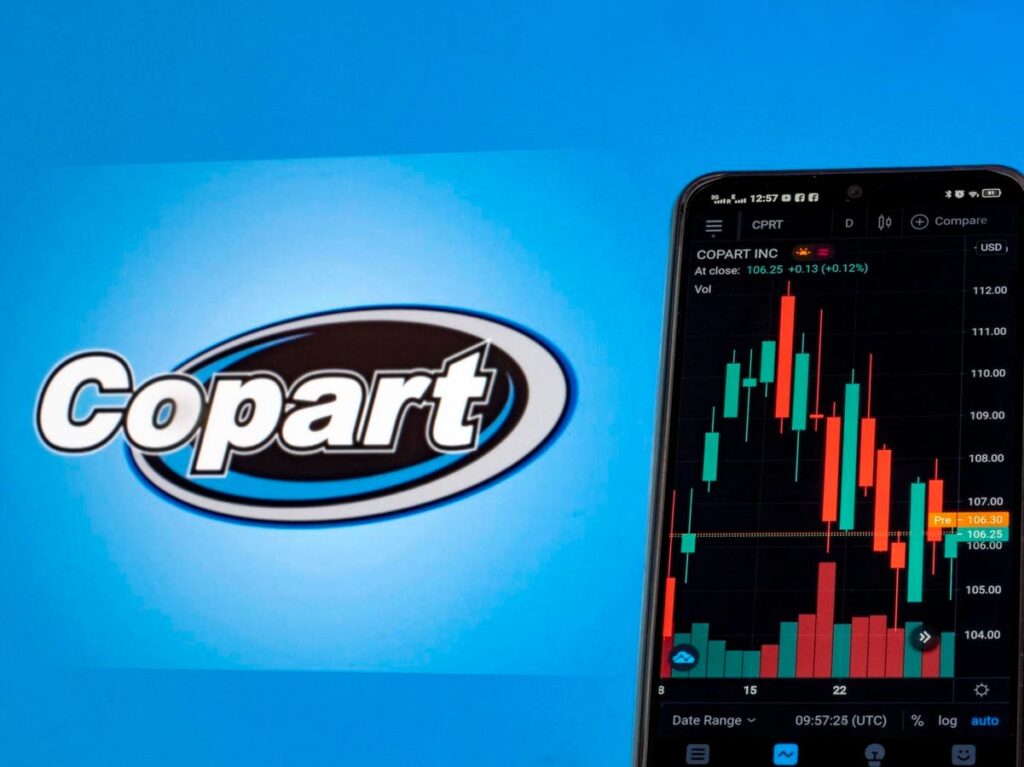Copart (NASDAQ:CPRT), a worldwide online automobile auction service focused on vehicle salvaging, is scheduled to release its Q3 FY’25 earnings (April 2025 quarter) on May 22, showcasing a quarter during which the company is expected to continue experiencing an upward trend in volumes. Consensus predictions indicate revenue of approximately $1.23 billion for the quarter, reflecting a 9% increase year-over-year, while earnings are projected to be $0.42 per share, which is $0.03 higher than last year. The company has witnessed growth in its business over recent quarters, primarily driven by an increased supply of vehicles being scrapped due to natural disasters. Additionally, rising vehicle repair costs and the greater complexity of new cars mean that insurance companies are designating more vehicles as totaled instead of opting for repairs. This situation is acting as a tailwind for Copart.
Copart currently holds a market capitalization of $61 billion. Over the past twelve months, it generated revenue of $4.5 billion, achieving operational profitability with $1.6 billion in operating profits and net income of $1.5 billion. However, for those looking for upside with less volatility than individual stocks, the Trefis High Quality portfolio offers an alternative, having outperformed the S&P 500, yielding returns exceeding 91% since its inception.
View earnings reaction history of all stocks
Copart’s Historical Probability of Positive Post-Earnings Returns
Here are some observations on one-day (1D) post-earnings returns:
- Over the past five years, there have been 19 earnings data points recorded, with 8 positive and 11 negative one-day (1D) returns observed. In summary, positive 1D returns have occurred about 42% of the time.
- Importantly, this percentage increases to 55% when considering data for the last 3 years instead of the last 5 years.
- The median of the 8 positive returns is 1.8%, while the median of the 11 negative returns is -1.6%
Further data regarding the observed 5-Day (5D) and 21-Day (21D) returns following earnings is summarized in the table below along with the statistics.
Connection Between 1D, 5D, and 21D Historical Returns
A relatively less risky strategy (although not useful if the correlation is weak) is to analyze the correlation between short-term and medium-term returns post earnings, identify a pair that demonstrates the highest correlation, and execute the suitable trade. For example, if 1D and 5D exhibit the highest correlation, a trader can position themselves “long” for the ensuing 5 days if the 1D post-earnings return is positive. Below is some correlation data based on 5-year and more recent 3-year history. Please note that the correlation 1D_5D signifies the correlation between 1D post-earnings returns and the subsequent 5D returns.
Is There Any Correlation with Peer Earnings?
Occasionally, the performance of peers can affect the stock’s reaction after earnings are announced. In fact, the pricing may begin before the earnings are disclosed. Here is some historical data regarding the past post-earnings performance of Copart stock compared to the stock performance of peers that reported earnings just prior to Copart. For an equitable comparison, peer stock returns are also represented as post-earnings one-day (1D) returns.
Learn more about Trefis RV strategy that has outperformed its all-cap stocks benchmark (a combination of all three: the S&P 500, S&P mid-cap, and Russell 2000), yielding strong returns for investors. On a separate note, if you seek upside with a smoother experience than an individual stock like Copart, consider the High Quality portfolio, which has surpassed the S&P, boasting returns greater than 91% since its inception.
Read the full article here


